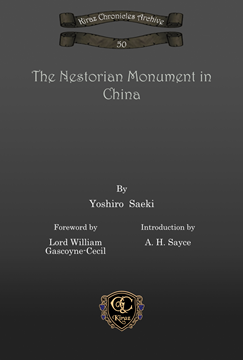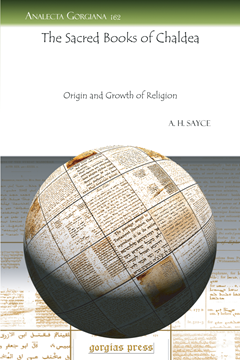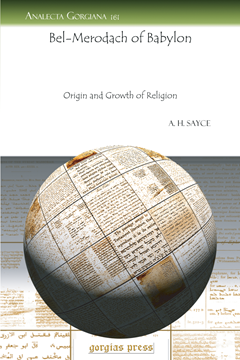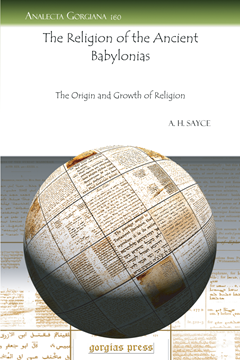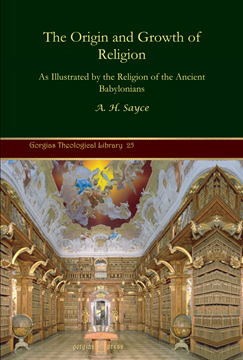A. H. Sayce
The Nestorian Monument in China
Series: Kiraz Chronicles Archive 50
ISBN: 978-1-61143-838-3
The text in Chinese and Syriac, with English translation and notes, of the Nestorian Stele, set up in Changan in 781, with a history of the Nestorian Christians of China and their final state as a secret society.
$203.00 (USD)
The Sacred Books of Chaldea
Origin and Growth of Religion
By A. H. Sayce
Series: Analecta Gorgiana 162
ISBN: 978-1-60724-177-5
This fifth extract from Sayce’s Origin and Growth of Religion, the topic turns to the “sacred books” of the Babylonians. Beginning with the “Chaldean Rig-Veda,” collections of hymns identified from the earliest days of Assyriology, Sayce also considers the earlier, less developed magical texts. Future considerations – sin, the status of heaven and Hades, and cosmology finish out the essay.
$43.00 (USD)
Bel-Merodach of Babylon
Origin and Growth of Religion
By A. H. Sayce
Series: Analecta Gorgiana 161
ISBN: 978-1-60724-176-8
In this second lecture extracted from Sayce’s Origin and Growth of Religion, the renowned Assyriologist specifically considers the Babylonian deity Bel-Merodach. Noting that Cyrus the Great was a worshipper of this deity, the outlook of the priesthood of Bel-Merodach regarding his conquest of Babylon begins the discussion. Sayce then discusses localized versions of Merodach, considering Eridu, Borsippa, and Assur.
$41.00 (USD)
The Religion of the Ancient Babylonias
The Origin and Growth of Religion
By A. H. Sayce
Series: Analecta Gorgiana 160
ISBN: 978-1-60724-175-1
As the introductory lecture to his collection of observations on ancient religion, Sayce begins this extract with a consideration of the difficulties of knowing what can be deduced from ancient Mesopotamian religion. Extracted from Sayce’s Origin and Growth of Religion, this booklet will be of interest to those who research the early period of the field of Assyriology in order to learn where various concepts about Mesopotamian religious life have their genesis.
$50.00 (USD)
The Origin and Growth of Religion
As Illustrated by the Religion of the Ancient Babylonians
By A. H. Sayce
Series: Kiraz Theological Archive 25
ISBN: 978-1-59333-740-7
Originally published as the Hibbert Lectures of 1887, this series of essays covers more than the title suggests. The work of an early explorer of Assyriology, this book traces many of the more familiar motifs and themes from ancient religion back to the ancient Babylonians.
$218.00 (USD)

